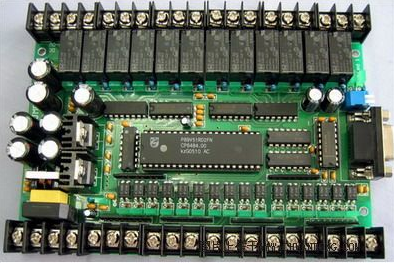1. Sensor of SMT placement machine
I believe many people know that SMT placement machines are widely used in the electronic assembly industry. SMT placement machines are divided into boom, composite, rotary, and large-scale parallel systems. Then the sensors in the SMT placement machine, you How much do you know? Next, I will introduce to you.
1. Pressure sensor: The placement machine, including various cylinders and vacuum generators, has certain requirements for air pressure. When the pressure is lower than the equipment requirements, the machine cannot operate normally, and the pressure sensor is always monitoring the pressure change. Once abnormal, it will alarm in time to remind the operator to deal with it in time.
2. Negative pressure sensor: The suction nozzle of the placement machine sucks components by negative pressure, which consists of a negative pressure generator (jet vacuum generator) and a vacuum sensor. If the negative pressure is not enough, the components will not be sucked, the feeder has no components or the components are stuck in the material bag and cannot be sucked up, the suction nozzle will not suck the components. These situations will affect the normal operation of the machine. The negative pressure sensor always monitors the negative pressure changes. When the components cannot be sucked or cannot be sucked, it can alarm in time to remind the operator to replace the feeder or check whether the suction nozzle negative pressure system is blocked.

3. Position sensor: The transmission and positioning of the printed board, including the counting of PCB, the real-time detection of the movement of the placement head and the worktable, the movement of auxiliary mechanisms, etc., have strict requirements on the position, and these positions need to pass various forms of position sensors. to fulfill.
4. Image sensor: The real-time display of the working status of the placement machine mainly uses a CCD image sensor, which can collect various required image signals, including PCB position, device size, and computer analysis and processing to make the placement head Complete adjustment and patch work.
2. Matters needing attention in patch processing
SMT is a surface assembly technology. At this stage, the electronics assembly industry is a relatively popular technology. SMT chip processing mainly refers to the placement of components on the PCB printed with glue or solder paste through the placement equipment, and then through the soldering furnace.
SMT is a surface assembly technology. At this stage, the electronics assembly industry is a relatively popular technology. SMT chip processing mainly refers to the placement of components on the PCB printed with glue or solder paste through the placement equipment, and then through the soldering furnace. SMT chip processing has been recognized by manufacturers for its advantages such as high assembly density, small size of electronic products, and good high-frequency characteristics, because the working efficiency and stable performance of SMT chip placement machines have brought great advantages to our production. SMT placement machine can greatly improve production efficiency and provide high-quality products to customers. The SMT placement machine is equivalent to a placement robot, which is a relatively sophisticated automated production equipment. Next, let's learn about the SMT placement processing requirements and operation precautions.
1. SMD RC components can be tinned on a solder joint first, and then one end of the component is placed, and the component is clamped with tweezers. After soldering one end, check whether it is placed correctly. If it has been placed, you can solder the other end. One end.
2. Before soldering, apply flux to the pad and process it with a soldering iron to avoid poor tin plating or oxidation of the pad, resulting in poor soldering, and the chip generally does not need to be processed.
3. When starting to solder all the pins, add solder to the tip of the soldering iron, and apply flux to all the pins to keep the pins moist. Touch the end of each pin of the chip with the tip of a soldering iron until you see the solder flowing into the pin. When soldering, keep the tip of the soldering iron parallel to the soldered pin to prevent overlap due to excessive soldering.
4. Use tweezers to carefully place the PQFP chip on the PCB board. Take care not to damage the pins and align them with the pads. Make sure that the chip is placed in the correct direction.
5. After soldering all the pins, wet all the pins with flux to clean the solder.
Hope that the above introduction can help everyone.